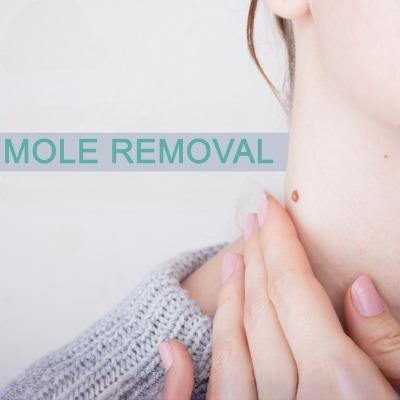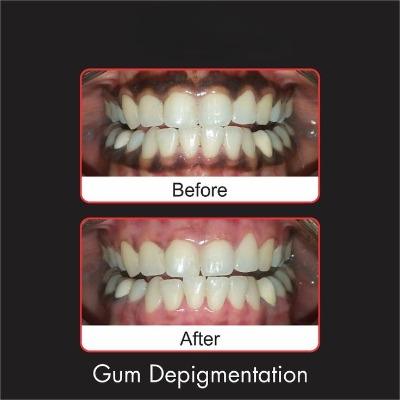Moles are benign skin growths that are either cosmetic issues or medical requirements for removal. With the current progress in dermatology, two of the most sought-after non-invasive mole removal techniques are Laser Mole Removal and Radiofrequency (RF) Ablation. Both procedures provide successful outcomes with less downtime, but they function distinctively and are appropriate for various moles. In this blog, we will discuss the main differences between laser and RF ablation to enable you to make a well-informed decision.
How Is Laser Mole Removal Different from Radiofrequency Ablation?
Factor
Laser Mole Removal
Radiofrequency (RF) Ablation
Mechanism of Action
Uses laser light energy to break down pigment and vaporize mole tissue.
Uses controlled heat energy to excise the mole and cauterize the area.
Types of Moles Treated
Best for small, flat, and pigmented moles (e.g., freckles, birthmarks). Not ideal for raised or deep moles.
Effective for both raised and flat moles, including those requiring deeper removal.
Precision and Effectiveness
Precise for superficial mole removal but may not fully remove deeply rooted moles in one session.
Offers better control for deep and raised moles, often achieving complete removal in a single session.
Pain and Anesthesia
Typically painless; numbing cream may be applied for comfort.
Requires local anesthesia as it involves the physical excision of the mole.
Healing Time and Scarring
Minimal scarring; healing takes around 1-2 weeks.
Slightly higher risk of scarring but allows for precise tissue control to minimize marks. Healing takes 1-3 weeks.
Number of Sessions Required
May require multiple sessions for complete clearance, especially for highly pigmented moles.
Usually a one-time procedure unless the mole is large or has deep roots.
Cost Considerations
Generally more expensive per session due to advanced technology.
More cost-effective as it is widely available and often requires only one session.
Factor | Laser Mole Removal | Radiofrequency (RF) Ablation |
Mechanism of Action | Uses laser light energy to break down pigment and vaporize mole tissue. | Uses controlled heat energy to excise the mole and cauterize the area. |
Types of Moles Treated | Best for small, flat, and pigmented moles (e.g., freckles, birthmarks). Not ideal for raised or deep moles. | Effective for both raised and flat moles, including those requiring deeper removal. |
Precision and Effectiveness | Precise for superficial mole removal but may not fully remove deeply rooted moles in one session. | Offers better control for deep and raised moles, often achieving complete removal in a single session. |
Pain and Anesthesia | Typically painless; numbing cream may be applied for comfort. | Requires local anesthesia as it involves the physical excision of the mole. |
Healing Time and Scarring | Minimal scarring; healing takes around 1-2 weeks. | Slightly higher risk of scarring but allows for precise tissue control to minimize marks. Healing takes 1-3 weeks. |
Number of Sessions Required | May require multiple sessions for complete clearance, especially for highly pigmented moles. | Usually a one-time procedure unless the mole is large or has deep roots. |
Cost Considerations | Generally more expensive per session due to advanced technology. | More cost-effective as it is widely available and often requires only one session. |
Pros and Cons of Laser Mole Removal and Radiofrequency Ablation?
Laser Mole Removal
Pros:
- Non-surgical, no cutting required
- Minimal to no scarring
- Rapid recovery time
- Ideal for cosmetic mole removal
Cons:
- Not as effective for raised or deep moles
- May require repeat sessions
- More costly per session
- RF Ablation
Pros:
- Effective on both flat and raised moles
- Typically only one session is required
- Less expensive than laser treatments
- Ideal for medical mole removal
Cons:
- Involves minor surgical excision, which can leave a small scar
- Requires local anesthetic
- Slightly longer healing time
Which Option is Right for You?
Your decision between laser mole removal and RF ablation is based on the type of mole you have and your own preferences:
- If you have a small, flat, and pigmented mole, laser removal is optimal for a scar-free result.
- If you have a raised or deep mole, RF ablation is a better option since it guarantees entire removal within a single session.
- If pain is your concern, the laser procedure is the less painful option.
- If you prefer the most cost-saving option, RF ablation could be the better option.
Post-Procedure Care Tips
- Keep the site clean, wash with mild soap and water.
- Avoid exposure to sunlight and apply SPF 30+ sunscreen to avoid hyperpigmentation.
- Do not scratch or pick the scab. Allow it to fall off on its own.
- Use prescribed ointments by your physician like antibiotics or a soothing gel.
- Watch for infection, If you experience too much redness, swelling, or pus, consult your doctor.
Final Thoughts
Laser Mole Removal and RF Ablation are both great treatments for mole removal with minimal recovery time and quality results. It should depend on the characteristics of the mole, your aesthetic sense, and finances. While a flat, colored mole can best be treated using laser treatment, RF ablation is a catch-all for the raised and in-depth moles.
If you are planning to remove a mole but are confused about which treatment you should opt for and How Is Laser Mole Removal Different from Radiofrequency Ablation?, Book your consultation with our qualified aesthetic physician at Enfield Royal Clinic Islamabad who will personalize a treatment plan according to your needs and requirements. By making the proper selection, you can get smooth and blemish-free skin with ease!










Leave a Reply